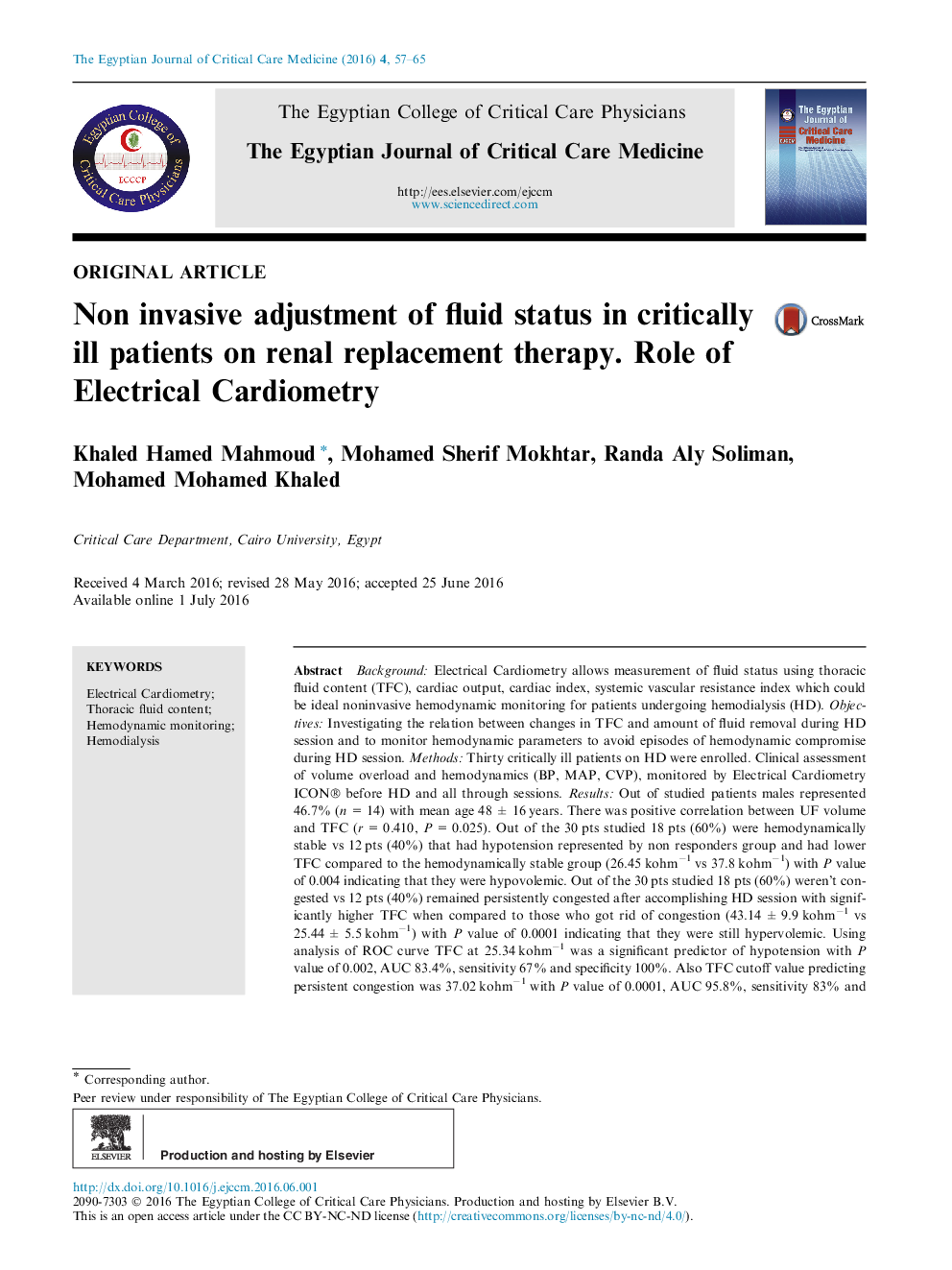| کد مقاله | کد نشریه | سال انتشار | مقاله انگلیسی | نسخه تمام متن |
|---|---|---|---|---|
| 2910850 | 1575308 | 2016 | 9 صفحه PDF | دانلود رایگان |
Background: Electrical Cardiometry allows measurement of fluid status using thoracic fluid content (TFC), cardiac output, cardiac index, systemic vascular resistance index which could be ideal noninvasive hemodynamic monitoring for patients undergoing hemodialysis (HD). Objectives: Investigating the relation between changes in TFC and amount of fluid removal during HD session and to monitor hemodynamic parameters to avoid episodes of hemodynamic compromise during HD session. Methods: Thirty critically ill patients on HD were enrolled. Clinical assessment of volume overload and hemodynamics (BP, MAP, CVP), monitored by Electrical Cardiometry ICON® before HD and all through sessions. Results: Out of studied patients males represented 46.7% (n = 14) with mean age 48 ± 16 years. There was positive correlation between UF volume and TFC (r = 0.410, P = 0.025). Out of the 30 pts studied 18 pts (60%) were hemodynamically stable vs 12 pts (40%) that had hypotension represented by non responders group and had lower TFC compared to the hemodynamically stable group (26.45 kohm−1 vs 37.8 kohm−1) with P value of 0.004 indicating that they were hypovolemic. Out of the 30 pts studied 18 pts (60%) weren’t congested vs 12 pts (40%) remained persistently congested after accomplishing HD session with significantly higher TFC when compared to those who got rid of congestion (43.14 ± 9.9 kohm−1 vs 25.44 ± 5.5 kohm−1) with P value of 0.0001 indicating that they were still hypervolemic. Using analysis of ROC curve TFC at 25.34 kohm−1 was a significant predictor of hypotension with P value of 0.002, AUC 83.4%, sensitivity 67% and specificity 100%. Also TFC cutoff value predicting persistent congestion was 37.02 kohm−1 with P value of 0.0001, AUC 95.8%, sensitivity 83% and specificity 100%. Conclusion: Electrical Cardiometry is an evolving noninvasive tool for adjusting fluid status of critically ill patient on RRT using thoracic fluid content as an indicator of fluid status that could be used to avoid hemodynamic instability and persistent volume overload and congestion during and after HD session.
Journal: The Egyptian Journal of Critical Care Medicine - Volume 4, Issue 2, August 2016, Pages 57–65
